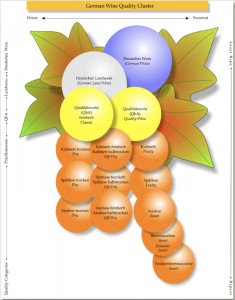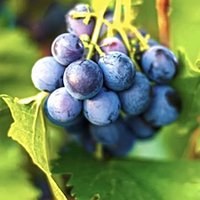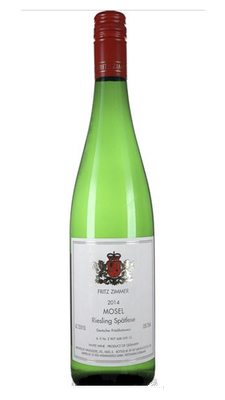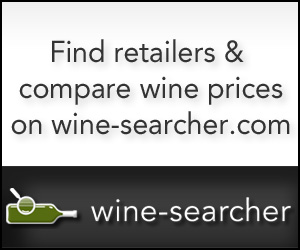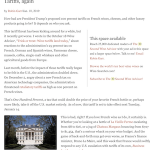Wait! What? I’m opening another German wine? Usually, when I taste a German wine, I wonder why I don’t do it more often. German wine can be delicious, but it’s just different enough to keep me away. So now I’m working on that.
Buy me a glass of wine
Now you can buy me a “glass of wine” to chip in $5 toward our expenses. I don’t accept free wine, so every small donation helps support our expenses. Click to learn more! buymeacoffee.com/RobG
Browse the world’s ten best value wines on Wine-Searcher.com!
Quite a few of us share this aversion, apparently: In terms of dollar value, German wine doesn’t crack the top five countries that export wine to the US: France, Italy, New Zealand, Spain, and Australia. Germany ranks only ninth in U.S. imports ranked by value. It squeaks in just ahead of Portugal.
Why is German wine such a hard sell, even, frankly, for me? It boasts more than a millennium of history and experience. And much of it seems to be a perfect fit for stereotypical American tastes: It’s often – not always – slightly sweet. It’s usually light and refreshing, and it’s naturally low in alcohol. German wines often combine a luscious, fresh fruitiness with steely acidity and an intriguing mineral character that sets it well apart from popular wine styles. And the most prevalent grape by far is Riesling, undisputably one of the world’s greatest wine grapes.
What is the problem here? For one thing, that delicious difference may be a problem for those of us more accustomed to the dry, often tannic table wines of France and Italy and their descendants in the New World. German wine is different, and that takes some getting used to.
Maybe more significant, though, is Germany’s ancient tradition of long, polysyllabic German names and descriptions; labels that provide almost too much information in a wine labeling paradigm that’s completely different from most of the rest of the world.
Let’s consider the delicious, affordable Fritz Zimmer Mosel Riesling Auslese that I recommended in the last issue, and its sibling from the same producer, Fritz Zimmer Mosel Riesling Spätlese, that I say good things about just below.
They were both delicious wines in the German style, both from the favored Mosel Valley. But a delicious German wine is very different from a delicious French or Italian wine, and that requires a mental re-set.
And then there’s that vocabulary. What’s the difference between an Auslese and a Spätlese anyway? And that word “Prädikatswein” on the front label: What does that even mean? Not to mention the mysterious “A. P. Nr. 2 907 668 058 20” just below it. What’s more, even if you memorized the basics of the German wine label a while back, much has changed in recent years.
Now, one legitimate response here is, “Who cares?” You don’t have to know a thing about the ancient walled castle at Carcassone to enjoy the Laroque Cité de Carcassonne that I reported last month, either.
But we learn by osmosis, and most of us who enjoy Italian or French wines and their New World counterparts most of the time have picked up at least the basics. Then we turn to a Mosel or Rhine or other German wine and get lost among the Auses and Späts and other unfamiliar terms; we enjoy the wine, and we run away.
Fortunately, help is at hand. German Wine Estates, billed as “The site for German Wine Lovers,” comes to the rescue with Understanding German Wine Labels, a detailed, clear one-pager.
“German wine labels are very informative once all the information given can be identified and interpreted,” it reassures us. “While many other wines will list only the producer, vintage, region, and country, German labels will state the quality level of the wine, the grape, the vineyard, and a style or taste indication.”
So, that word “Prädikatswein”? It means “Wine with Special Attributes.” Formerly the even more jaw-breaking “Qualitätswein mit Prädikat,” it’s the top quality level for German wine. Included within this category are the five ascending levels of ripeness (measured by the sugar level in the grapes at harvest) which are Kabinett, Spätlese, Auslese, Beerenauslese, and Trockenbeerenauslese.
Spätlese, the second ripeness level, means late harvest, made from grapes left on the vines to achieve additional ripeness and sugars. Auslese is reserved for late-harvested grape bunches chosen for their extra ripeness and sugars.
And so it goes. If you’re interested in German wines and would like to know them better and try them more often, I highly recommend bookmarking and saving >Understanding German Wine Labels,
Support The Wine Advisor:
“Buy me a glass of wine”
Hi, everyone! As many of you know, I don’t accept free wine or other gratuities from the industry, so small donations and a select group of carefully chosen advertisers make this publication possible. Now you can lend a hand directly and cheaply: Buy me a glass of wine for just $5 to chip in on our expenses. Every ten contributions adds up to $50, enough to buy wine for review in at least two editions of The 30 Second Wine Advisor.
Click to learn more! buymeacoffee.com/RobG
Today’s Tasting Report
Fritz Zimmer 2019 Mosel Riesling Spätlese ($14.99)
A step down the strict and detailed German ladder of ripeness from its Auslese sibling reported previously, Zimmer Mosel Riesling Spätlese is also a Prädikatswein, the top quality level for German wine. Clear and pale-gold, it breathes mixed citrus and pear aromas and a characteristic whiff of oily minerality that spells Riesling. Flavors mirror the nose in a sweet but refreshing flavor profile, lacking the impressive structure of its Auslese stablemate, but perhaps that is to be expected. Fresh, light acidity and stony minerality become more evident in the long, tart-sweet finish. Light 8% alcohol befits an aperitif or sipping wine. U.S. importer: Winesellers Ltd., Niles, Ill. (Feb. 28 , 2022)
FOOD MATCH: Pleasant sipped in its own as an aperitif or patio drink once warm weather returns, it’s also easily tuned to a range of traditional German fare. It was delicious with a lunch of Beyond Meat bratwurst with sauerkraut and mashed potatoes.
WHEN TO DRINK: Quality Riesling can reward aging. I wouldn’t hesitate to cellar it for five years.
VALUE:
Wine-Searcher.com’s $16 average U.S. retail came in a couple of dollars above my $15 local price. It’s still a good value in this general price range.
WEB LINK:
Importer Winesellers Ltd. offers this good info sheet on the winery.
FIND THIS WINE ONLINE:
Locate vendors and compare prices for Fritz Zimmer Mosel Riesling Spätlese on Wine-Searcher.com.
Follow this Wine-Searcher link to read more about the Mosel valley and find listings for dozens of other wines of the region.
Read about Riesling and browse scores of wines made from this white grape at this Wine-Searcher link.
Wine Focus March 2022:
Riesling is coming!
The first written reference to Riesling dates back to March 13, 1435, so this classic variety offers nearly 600 years of history to ponder.
Germany is still the largest producer of Riesling, but there’s all sorts of other countries and regions to celebrate. Grab a Riesling from New Zealand, Austria or Canada. Make an effort to explore the rapidly improving Rieslings out of the Finger Lakes region of Western New York. Have a dry Riesling. Better yet, convince a skeptical friend that Riesling isn’t always sweet wine! Enjoy an Auslese with a cheese course. There’s 31 days to celebrate Riesling in March, and more than 31 ways to enjoy Riesling.
You are welcome to join us! Check in at Wine Focus March 2022, and say hello!
Today’s Sponsor:
Explore Wine-Searcher
Wine-Searcher.com is the place to go online if you want to find where to buy a particular wine that interests you. What’s more, Wine-Searcher.com offers so much more. It’s well worth a visit just to discover its many features, including its popular list of the world’s Top 10 Best Value Wines.
Good wines we’ve tried under $10.99!
Want tips to still more good, inexpensive wines? Here are Wine-Searcher links to vendors and prices for a bunch more wines for $10.99 or less that I’ve told you about in recent years. In some cases the prices may have risen over the $10.99 mark since I reviewed them, but they should still be excellent bargains. Please tell us about your favorites!
- Laroque Cité de Carcassonne
- Famille Perrin 2019 “La Vielle Ferme” Rouge ($7.99)
- Querceto 2019 Chianti ($10.99)
- Porto Kopke Fine Ruby and Tawny Port ($9.99/375ml)
- La Fiera 2016 Montepulciano d’Abruzzo ($8.99)
- La Vieille Ferme Vin de France Rosé ($8.99)
- La Fiera Montepulciano d’Abruzzo ($8.99)
- Laroque Cité de Carcassonne Cabernet Franc ($9.99)
- Domaine de Pouy 2016 Côtes de Gascogne ($7.99)
- Alamos Mendoza Malbec ($9.99)
- Caposaldo Chianti ($8.99)
- d’Arenberg McLaren Vale “The Stump Jump” ($9.99)
Sponsor the Wine Advisor.
We appreciate your support
Support The 30 Second Wine Advisor and help us pay the rent while reaching 25,000 dedicated readers with your sponsorship message in this space, at the top of this E-letter, and on our social media. If you’re an established business in wine, food, and similar ventures, there’s no better way to focus your message toward an audience that comes here for just those topics. See our Sponsorship Page, or email Robin Garr for more information.
Wine Forum and Social Media
If you have questions, comments or ideas to share about today’s article or wine in general, you’re always welcome to drop by our online WineLovers Discussion Group, the Internet’s first and most civil online community.
Discussions are open for public viewing, but you must register to post. If you’re a Facebook user, you can join our forum with a single click! All you need to do is visit the forum and click “Social Login” at upper right.
We’d also be delighted to have you visit and “like” our WineLovers Facebook Page. This way you can get Facebook notifications when there’s a new The 30 Second Wine Advisor issue or a topic of particular interest on the WineLovers Discussion Group (WLDG).

